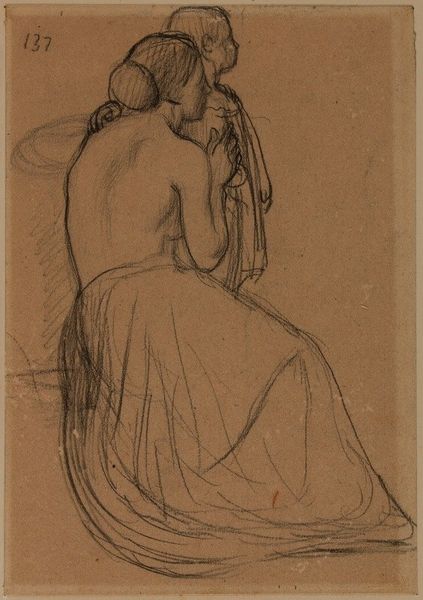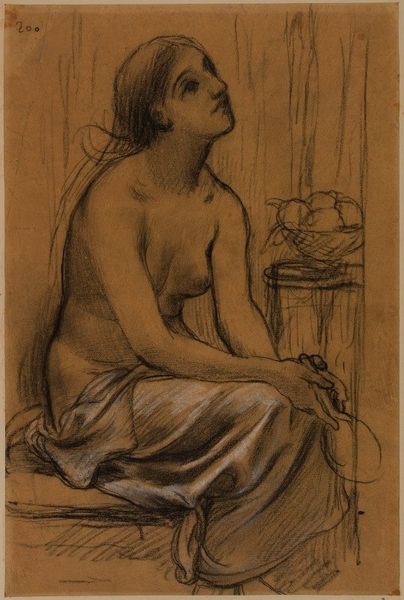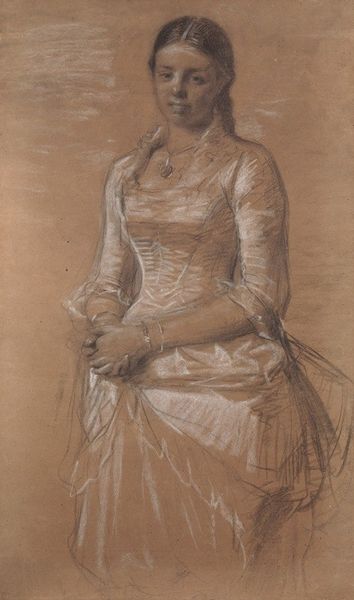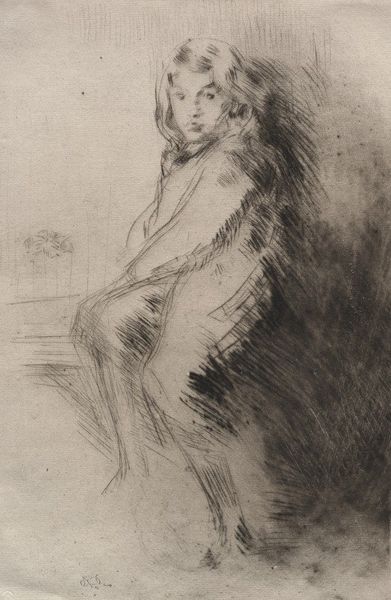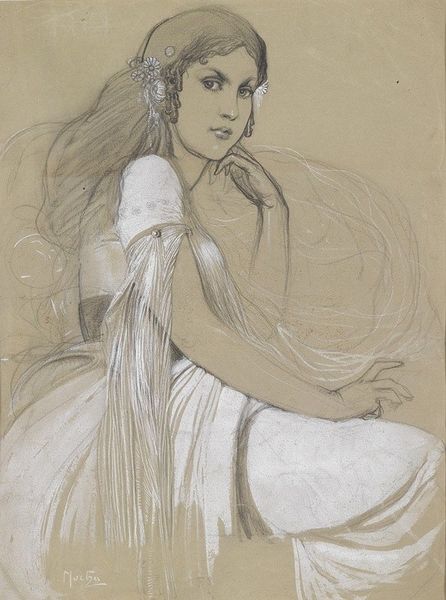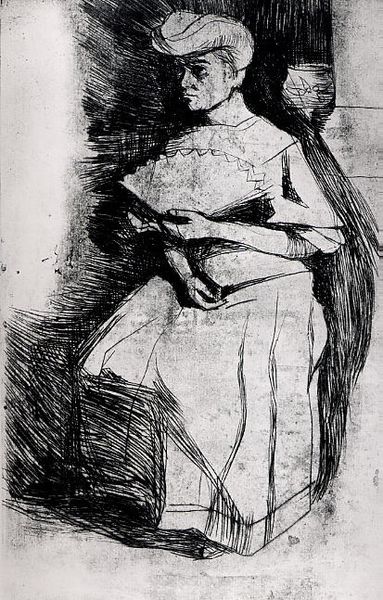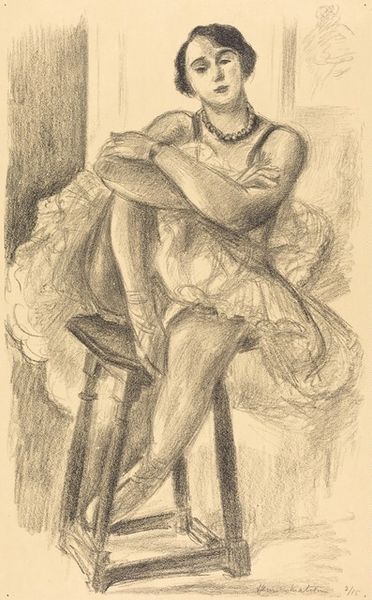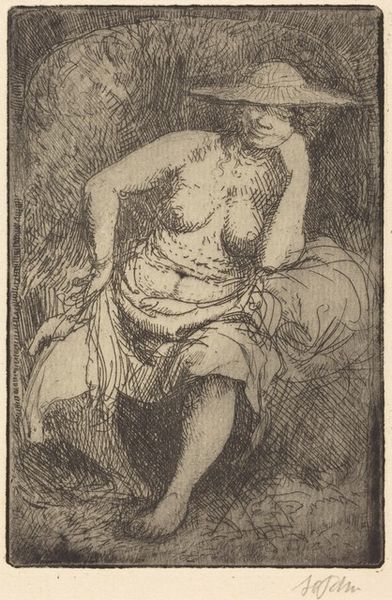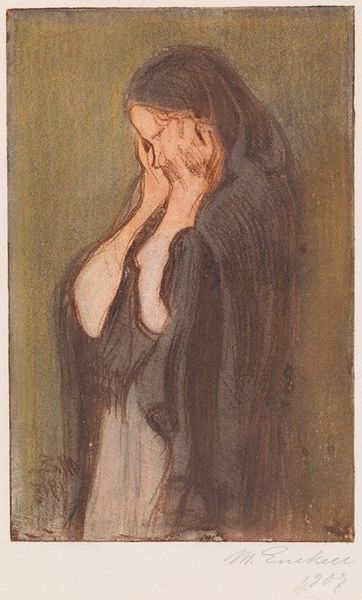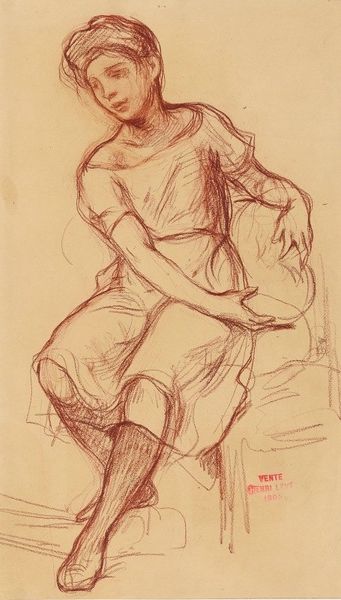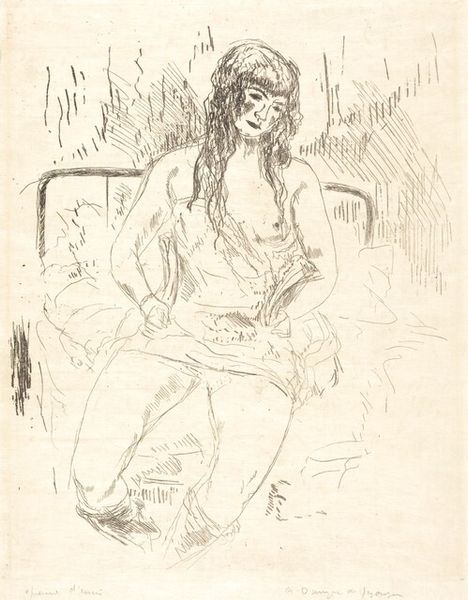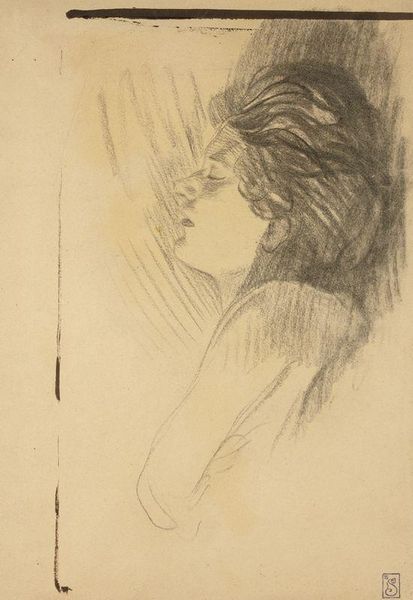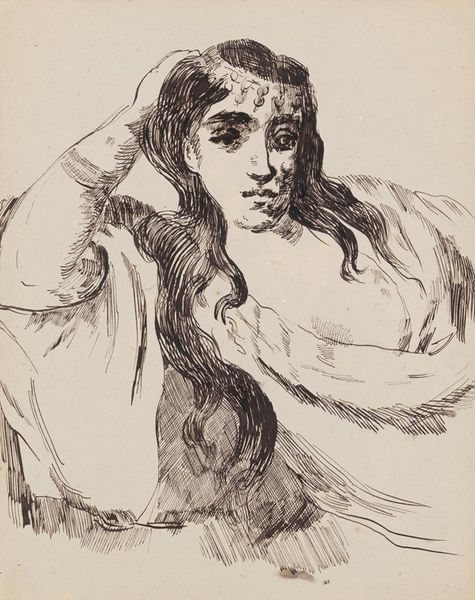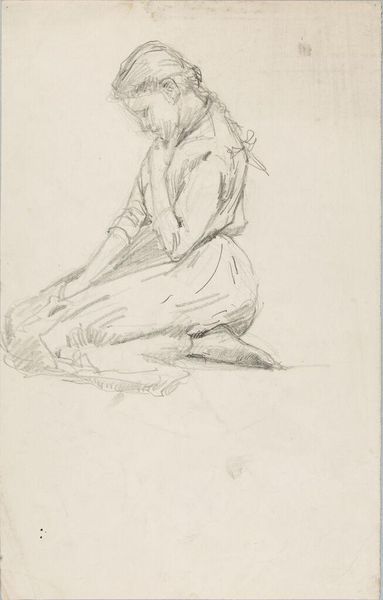
drawing, charcoal
portrait
drawing
charcoal drawing
romanticism
genre-painting
charcoal
academic-art
realism
Dimensions: 23 x 17.5 cm
Copyright: Public domain
Editor: This is "Gypsy with Tambourine" by Alexandre Antigna, a charcoal drawing. The woman's expression seems to hold both melancholy and a hint of defiance. What symbols or cultural meanings do you see in this work? Curator: The figure of the "gypsy" or Romani woman is layered with meaning. She becomes a symbol of freedom, otherness, and a rejection of bourgeois norms, doesn't she? Note the tambourine; its percussive sound signals celebration and nomadic movement. Do you get a sense of how this imagery might carry a certain exoticism, but also perpetuate stereotypes? Editor: I do. It feels like she’s been placed in this role. Is the tambourine always connected to freedom in the visual lexicon? Curator: Not always, no. Here it's vital to consider context. In 19th century Romanticism, the instrument becomes linked to passionate expression outside social constraint. The darkness of the charcoal too; is this a shadow of society's making or her own inner self? The shadow emphasizes her separation from an accepted world. Editor: That's a great point, like she is on the fringes. Did this type of representation challenge or reinforce social norms at the time? Curator: A bit of both, I think. The Romantic ideal celebrated the individual, the untamed spirit, yet it also exoticized and essentialized marginalized communities. So what might a modern viewer make of it, knowing its problematic roots? Editor: I think we need to be aware of how these romanticized portrayals can flatten lived experiences, while also acknowledging the artistic merit and historical context. Curator: Precisely! Seeing both the visual power and the potential for misinterpretation, opens up deeper understanding. It allows for respectful and contextual dialogue.
Comments
No comments
Be the first to comment and join the conversation on the ultimate creative platform.
